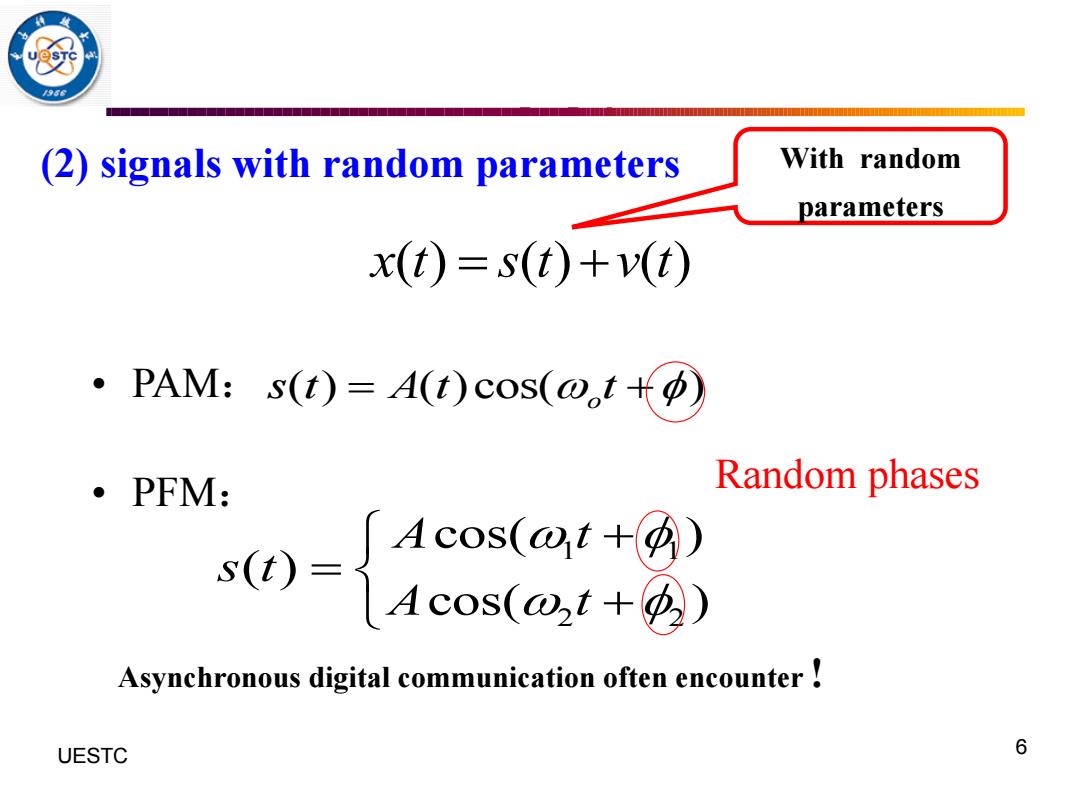
(2)signals with random parameters With random parameters x(t)=s(t)+v(t) ·PAM:s(t)=A(t)Cos(o,t十p) PFM: Random phases -8e】 4cos(@+) Asynchronous digital communication often encounter! UESTC 6
UESTC 何子述等 6 (2) signals with random parameters x t s t v t ( ) ( ) ( ) = + • PAM: ( ) ( )cos( ) o s t A t t = + • PFM: 1 1 2 2 cos( ) ( ) cos( ) A t s t A t + = + Asynchronous digital communication often encounter ! With random parameters Random phases
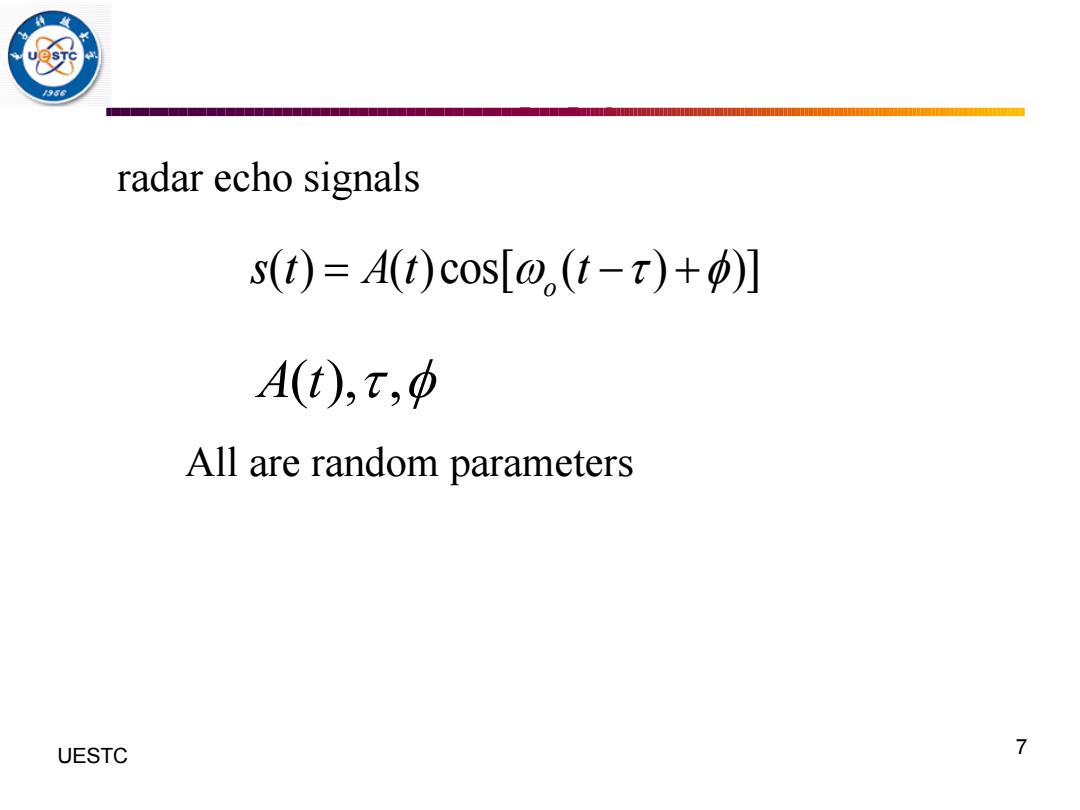
radar echo signals s(1)=A(t)cos[@(t-t)+) A(t),t,o All are random parameters UESTC 7
UESTC 何子述等 7 ( ) ( )cos[ ( ) )] o s t A t t = − + radar echo signals All are random parameters A t( ), ,
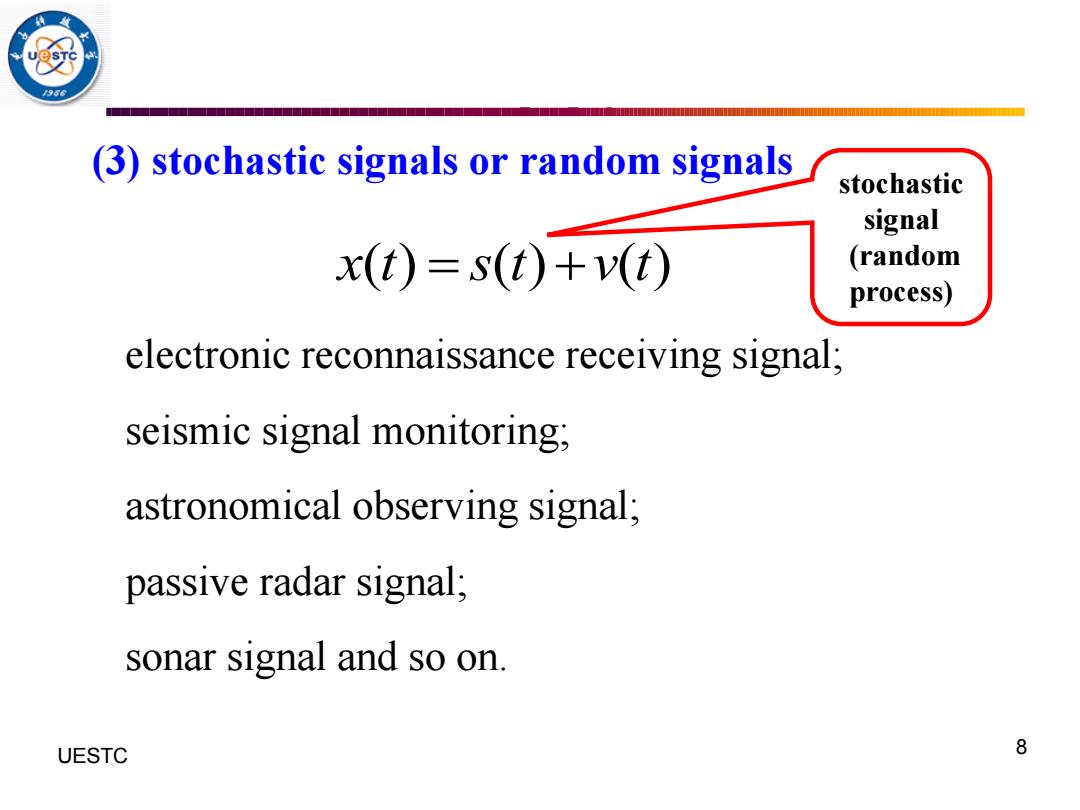
(3)stochastic signals or random signals stochastic signal x(t)=s(t)+v(t) (random process) electronic reconnaissance receiving signal; seismic signal monitoring; astronomical observing signal; passive radar signal; sonar signal and so on. UESTC 8
UESTC 何子述等 8 (3) stochastic signals or random signals x t s t v t ( ) ( ) ( ) = + electronic reconnaissance receiving signal; seismic signal monitoring; astronomical observing signal; passive radar signal; sonar signal and so on. stochastic signal (random process)
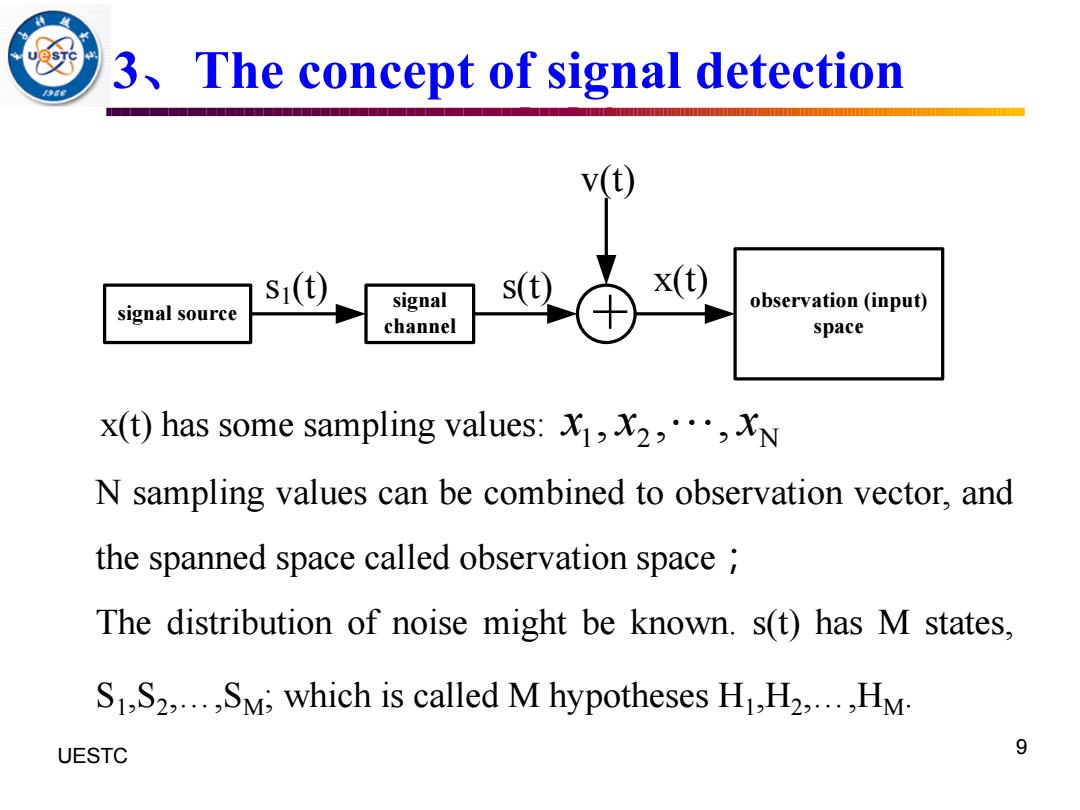
3 The concept of signal detection S1() s(t) x(t) signal observation(input) signal source channel space x(t)has some sampling values:,N N sampling values can be combined to observation vector,and the spanned space called observation space The distribution of noise might be known.s(t)has M states, S1,S2,...,SM;which is called M hypotheses H1,H2,...,HM UESTC 9
UESTC 何子述等 9 3、The concept of signal detection signal source signal channel observation (input) space s1(t) + s(t) v(t) x(t) x(t) has some sampling values: 1 2 N x x x , , , N sampling values can be combined to observation vector, and the spanned space called observation space ; The distribution of noise might be known. s(t) has M states, S1 ,S2 ,…,SM; which is called M hypotheses H1 ,H2 ,…,HM
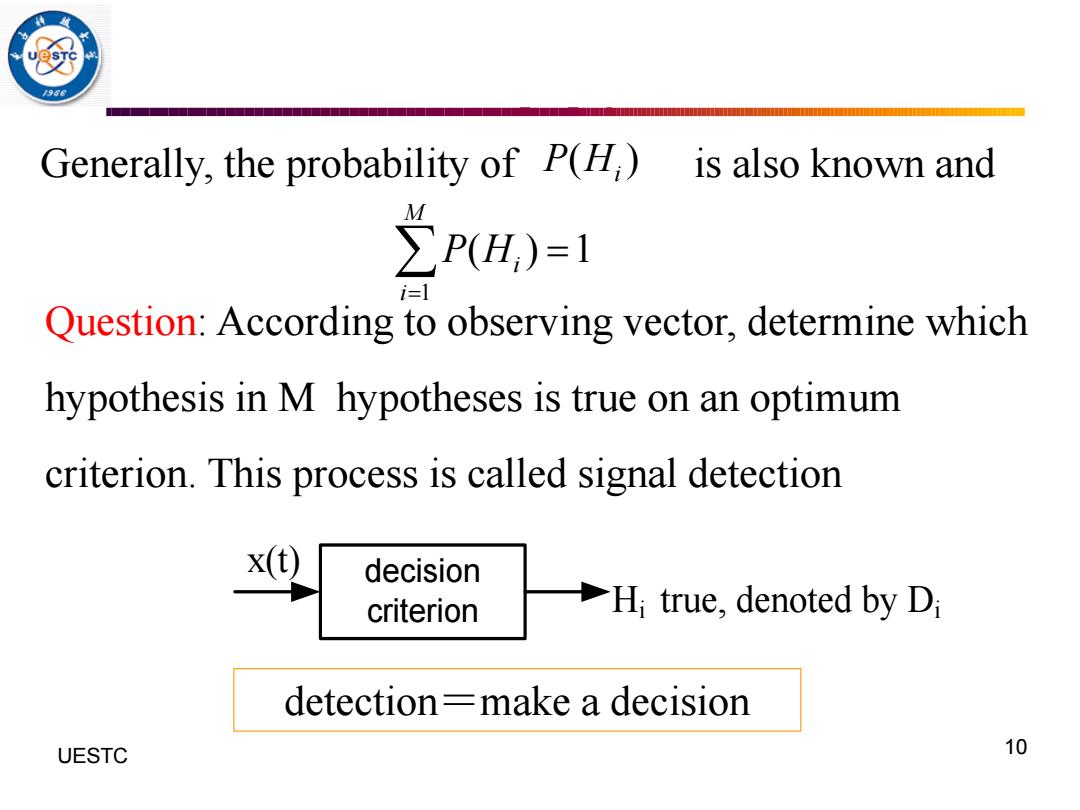
Generally,the probability of P(H) is also known and ∑P(H,)=1 i=l Question:According to observing vector,determine which hypothesis in M hypotheses is true on an optimum criterion.This process is called signal detection x(t) decision criterion H true,denoted by Di detection=make a decision UESTC 10
UESTC 何子述等 10 Question: According to observing vector, determine which hypothesis in M hypotheses is true on an optimum criterion. This process is called signal detection decision criterion x(t) Hi true, denoted by Di detection=make a decision Generally, the probability of is also known and 1 ( ) 1 M i i P H = = ( ) P Hi